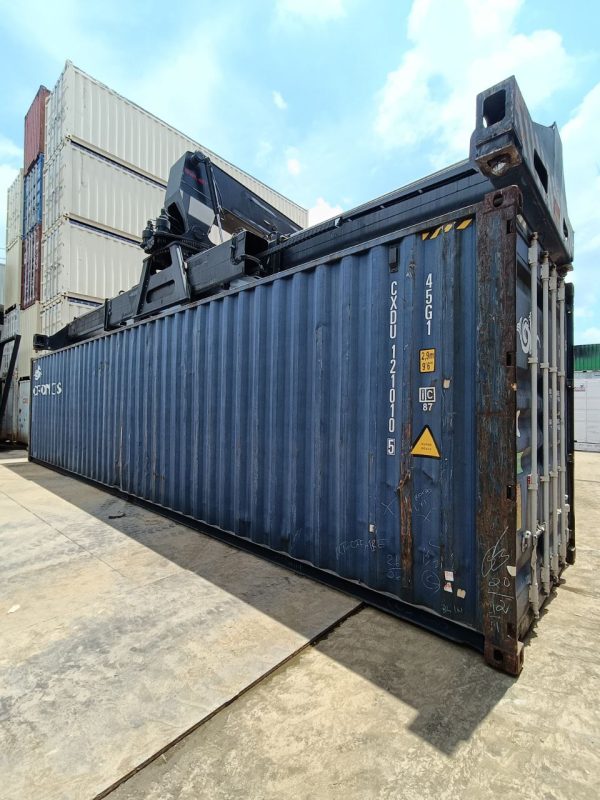Building a Shipping Container Home: A Step-by-Step Guide for Beginners

In recent years, shipping container homes have gained popularity as a modern, eco-friendly, and affordable housing option. These homes are not only aesthetically unique but also offer a practical solution to the growing demand for sustainable living. If you’re considering building a shipping container home, here’s a comprehensive step-by-step guide to help you navigate the process from start to finish.
1. Research and Planning
Before diving into construction, it’s crucial to conduct thorough research and planning. Understand the benefits and challenges of container homes. Shipping containers are durable, stackable, and recyclable, but they also require careful insulation and ventilation. Research local building codes and regulations, as these can vary significantly by location and may impact your project.
Planning includes:
- Budget: Estimate the total cost, including containers, site preparation, permits, and interior finishes.
- Design: Sketch a basic layout and decide on the number of containers you’ll need. Consider factors like insulation, plumbing, and electrical systems.
- Site Selection: Choose a suitable location with proper access and utilities.
2. Sourcing Containers
Once you have a plan, it’s time to acquire your shipping containers. Containers come in various sizes, typically 20 or 40 feet long. Decide based on your design and space requirements.
Tips for sourcing:
- Condition: Look for containers in good condition, preferably those with minimal rust and damage. Newer containers may be more expensive but are often in better shape.
- Inspection: If possible, inspect the containers yourself or have a professional check for structural issues and contamination.
3. Preparing the Site
Site preparation is a critical step that involves clearing and leveling the land where your container home will be placed. You may need to:
- Excavate: Remove any debris and level the ground.
- Foundation: Build a foundation that can support the weight of the containers. Options include concrete piers, a concrete slab, or a wooden platform.
4. Modifying Containers
Shipping containers come with doors and windows that may not suit your design. Modifying them is necessary to create a functional living space. This process involves:
- Cutting: Make openings for doors and windows using a torch or plasma cutter. Ensure you reinforce any cut sections to maintain structural integrity.
- Insulating: Containers can become very hot or cold. Insulation options include spray foam, fiberglass batts, or rigid panels. Proper insulation helps with temperature control and energy efficiency.
- Ventilation: Install vents or an HVAC system to ensure adequate airflow and prevent moisture buildup.
5. Assembling the Containers
With modifications complete, it’s time to assemble the containers according to your design. This process typically involves:
- Lifting and Placing: Use a crane or forklift to position the containers on the foundation.
- Joining: Weld or bolt the containers together. Ensure that seams and joints are sealed to prevent leaks and improve insulation.
6. Installing Utilities
A functional home requires utilities such as electricity, water, and sewage. Plan and install these systems carefully:
- Plumbing: Install pipes for water supply and waste removal. Ensure proper sealing to prevent leaks.
- Electrical: Run wiring for lighting, outlets, and appliances. Follow local electrical codes and consider hiring a licensed electrician.
- Heating and Cooling: Install HVAC systems, heaters, or air conditioners based on your climate and needs.
7. Interior Finishing
The interior of a shipping container home requires finishing to make it livable and comfortable:
- Walls and Floors: Cover the container walls with drywall, plywood, or other materials. Install flooring such as laminate, tile, or carpet.
- Kitchen and Bathroom: Install kitchen cabinets, countertops, and appliances. Set up bathroom fixtures including a shower, toilet, and sink.
- Painting and Decorating: Paint the walls and add decorative elements to create a personalized and welcoming space.
8. Final Inspections and Adjustments
Before moving in, conduct a final inspection to ensure everything is functioning correctly and meets building codes. Address any issues or adjustments needed.
9. Moving In
Once everything is complete and inspected, you can start moving into your new shipping container home. Enjoy the unique design and sustainable living benefits of your new space.
Conclusion
Building a shipping container home can be a rewarding project, offering a blend of sustainability, affordability, and modern design. With careful planning, proper modifications, and attention to detail, you can create a functional and stylish home that stands out from traditional housing options. Whether you’re looking for a primary residence, a vacation getaway, or a unique living space, shipping container homes provide a versatile solution to modern housing needs.

